We bid Megs farewell on Sunday and had a relaxing day in Mas.
On Monday, we took things fairly easy too. We started at a winery called Salitis, which is part of the Cabardes region. They had a lovely red and a great white muscat and fortified grenache. We bought some of each.
From there we drove to Chateau de Saissac, which is another of the Cathar strongholds (along with Lastours, Minerve and Carcassonne). The Cathars were basically a cult that believed that earth and men were created by the devil, because God could create no evil. Or something along those lines. Anyway, the Catholics persecuted them and hunted them into extinction. During the "inquisition" the Cathars inhabited a bunch of fortress-like castles around Carcassonne, many of which are very spectacular.
Saissac is no exception. It's built on a hillside and has been partially restored. It would be a lot more in tact if it wasn't for looting during the 18th century when the keep was dynamited to find the "saissac treasure". From what I understood of the French, they found the treasure and some of it was on display in the museum inside the castle.
On Monday, we took things fairly easy too. We started at a winery called Salitis, which is part of the Cabardes region. They had a lovely red and a great white muscat and fortified grenache. We bought some of each.
From there we drove to Chateau de Saissac, which is another of the Cathar strongholds (along with Lastours, Minerve and Carcassonne). The Cathars were basically a cult that believed that earth and men were created by the devil, because God could create no evil. Or something along those lines. Anyway, the Catholics persecuted them and hunted them into extinction. During the "inquisition" the Cathars inhabited a bunch of fortress-like castles around Carcassonne, many of which are very spectacular.
Saissac is no exception. It's built on a hillside and has been partially restored. It would be a lot more in tact if it wasn't for looting during the 18th century when the keep was dynamited to find the "saissac treasure". From what I understood of the French, they found the treasure and some of it was on display in the museum inside the castle.
From Saissac, we drove to the Limousis cave only to find that in off season it's only open for a short while in the afternoon, which wasn't for another hour. We couldn't be bothered waiting around, so we drove off to find more wine.
We ended up at Domaine Villegly, of the Minnervois region, which didn't produce much wine, but the wine they did produce was great. They do a lovely full-bodied red and a fruity rose, a couple of which found their way into our car.
On Tuesday we got up early and piled into the car for a road trip out to the Pont du Gard. This is an old Roman bridge over the Gard river for a aqueduct that was built to pipe water from the Uzes into Nimes. The bridge is amazing and holding together well considering it was built in around 19BC and still used in the 6th Century. There are about 10 official trails and a number of unnofficial ones where you can get differing views of the bridge. From these, I took a gazillion photos of the bridge, but I'll only post a couple...
For some perspective, the bridge is 50m high above the river and 275m long. They sure don't build bridges like they used to... or do they?? A question to be answered on another day.
After the bridge, we drove on to Orange (from the House of Orange, for those of you who know your European history). The town is not worth visiting, except for the exceptional Roman theatre. It's one of only three in the world with the theatre wall still standing and was built during Augustus Ceasar's rule, between 27BC and AD14.
The people probably put the theatre into perspective, but as another point of reference, the statue of Caesar is 3m high. The wall itself is 37m high and 103m wide.
It doesn't sound like we did much that day, but we didn't end up getting home until about 7:30pm. Which is well and truly late enough, so Paul doesn't have to drive the windy mountain roads in pitch black!
We had a leisurely drive along the Canal du Midi on Wednesday. This Canal was built by a crazy French guy called Pierre-Paul Riquet in the mid 17th century and links the Mediterranean Sea to the Atlantic Ocean. He spent all of his money, including his daughter's dowries and got himself into debt to build it, but died 6 months before it opened.
There are a number of canal bridges along the length of the canal. Now, by a canal bridge, I don't mean a road going over the canal, I mean the canal going over a stream/river. This one is the Pont-canal de Repudre, which was the first canal bridge built in France in 1676 by Riquet. If you look in the bottom right corner, you can see the water of the stream going under the canal.
There are quite a few pretty little villages along the canal, such as this one, Le Somail, which we would have quite happily sat down at to enjoy a nice cool beverage alongside the canal, if the whole of France didn't close in the early afternoon!
Near the Mediterranean end of the canal, is the city of Beziers, which is as far as we got on our drive. Just outside of Beziers is a series of 9 locks that allow boats to navigate a 25m drop. Only 8 of them are in action today and the canal has been diverted from the second bottom.
We managed to see a couple of boats going through the locks. I always find it fascinating to watch.
There's also a lift system, that bypasses the locks altogether. It doesn't seem to be in use anymore, but it would appear to be pretty nifty. It looks like the boat drives onto the lift, which then moves down along the concrete slope and deposits the boat at the other side. Would have been great to see it in action.
Not too much further along the canal is another bridge, Pont-canal de l'Orb, built in 1857 after the canal was diverted. This one is quite a bit longer than the previous.
The canal is really very beautiful and peaceful. Apparently you can hire a boat and drive the length of it yourself. Paul and I have started pondering this as another holiday. Apparenlty it takes a couple of months to do it properly though, so we might have to wait a while before we can save up enough money/annual leave!!


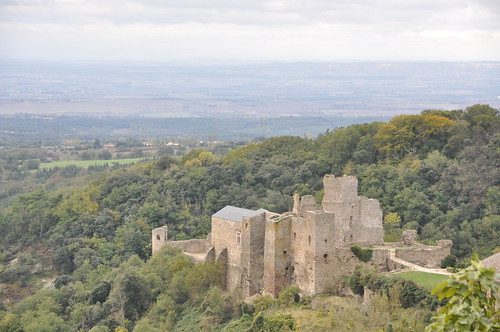


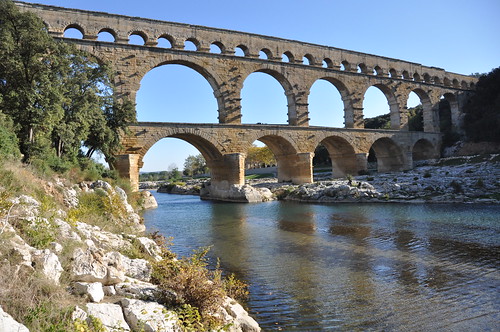
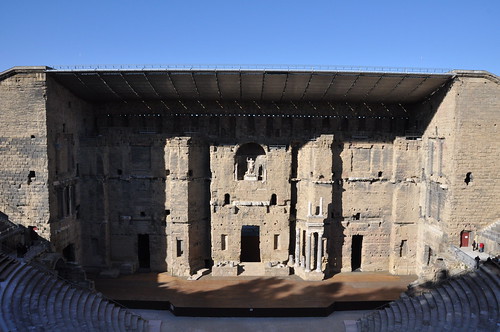
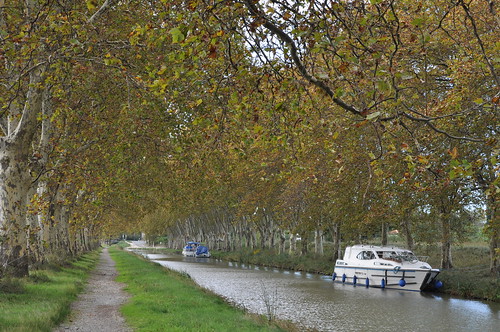

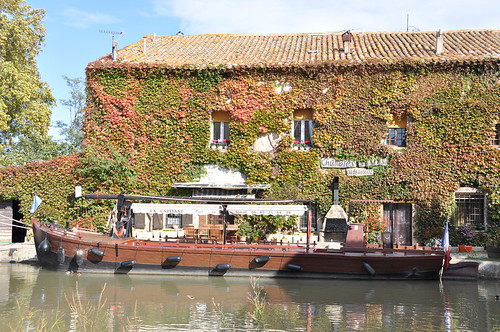
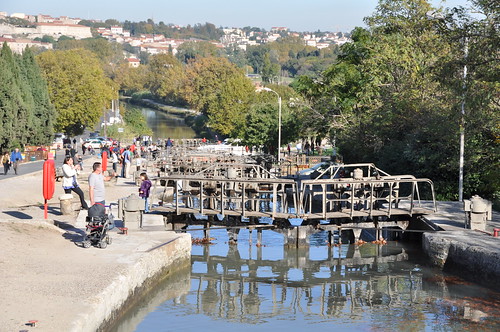
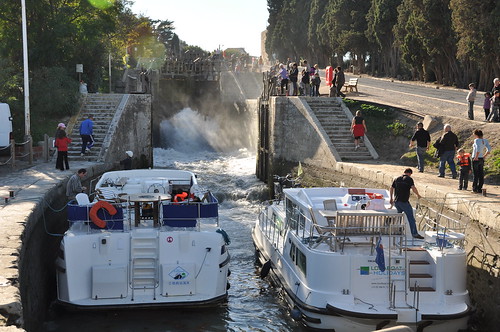
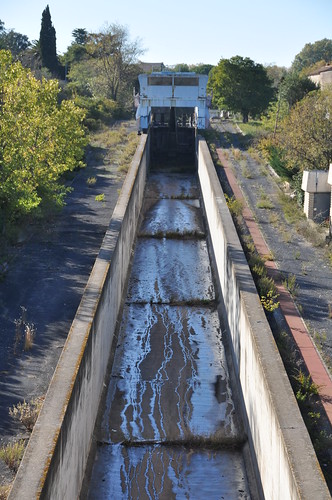
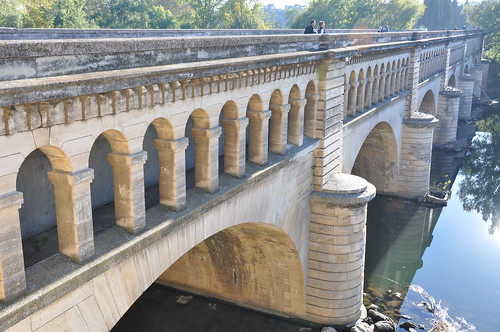


Such fabulous photos R! The theatre is amazing, as is the canal and the bridge! The history is just mind-boggling isn't it?
ReplyDeleteThanks Fi. It's crazy how old everything is. And how well it's all lasted!
ReplyDelete